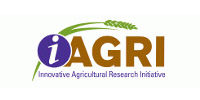Processing:
Prior to the arrival of these technologies, what libraries could do with usage data was limited; and many did little beyond collecting data.
What to do with the collected data: cost per usage
The collection of usage data through COUNTER and SUSHI protocols has led to a new level of sophistication in library management. Cost per use data is now relatively easy to compile for digital resources. With most vendor supplied and transaction based usage counts, digital content usage data is based on total usage for a given year, not a sample. The data collected to-date indicates that the cost per use of an article in an electronic journal is fairly inexpensive. The more often that digital content is used, the lower the unit cost, and the resulting increase in perceived value to the user population reflected by increased use does not incur additional cost. Therefore, offering digital content encourages the development of library services such as marketing, instruction, and liaison outreach. Moving to digital content also nurtures the development of new technology systems to leverage already committed expenses, such as OpenURL, web usability studies, and electronic resource management systems.
Many libraries now annually calculate unit costs for electronic books, electronic journals and databases and use that information to inform collection development decisions. Unit cost analysis can help to determine whether publishers’ cost increases are justified with increases in usage growing faster than the costs are inflating. While unit cost data should not be the sole determinant in buying decisions, it does provide data that can be used to explain to faculty and students why a title or package may not be a good investment at their university. Unit cost data also standardizes different publishers, vendors, and products so that titles and packages can be evaluated effectively
Yet these cost use data are just the start. Cost-use data can be related to the size of the potential population, for example, the biology department of a university. High usage relative to the user population is also factored into cost-usage analysis. Similarly the more data that can be brought into the analysis about the user, the more informative it is about user behavior and user outcomes.
Solution: Tools and RMS: generate reports




